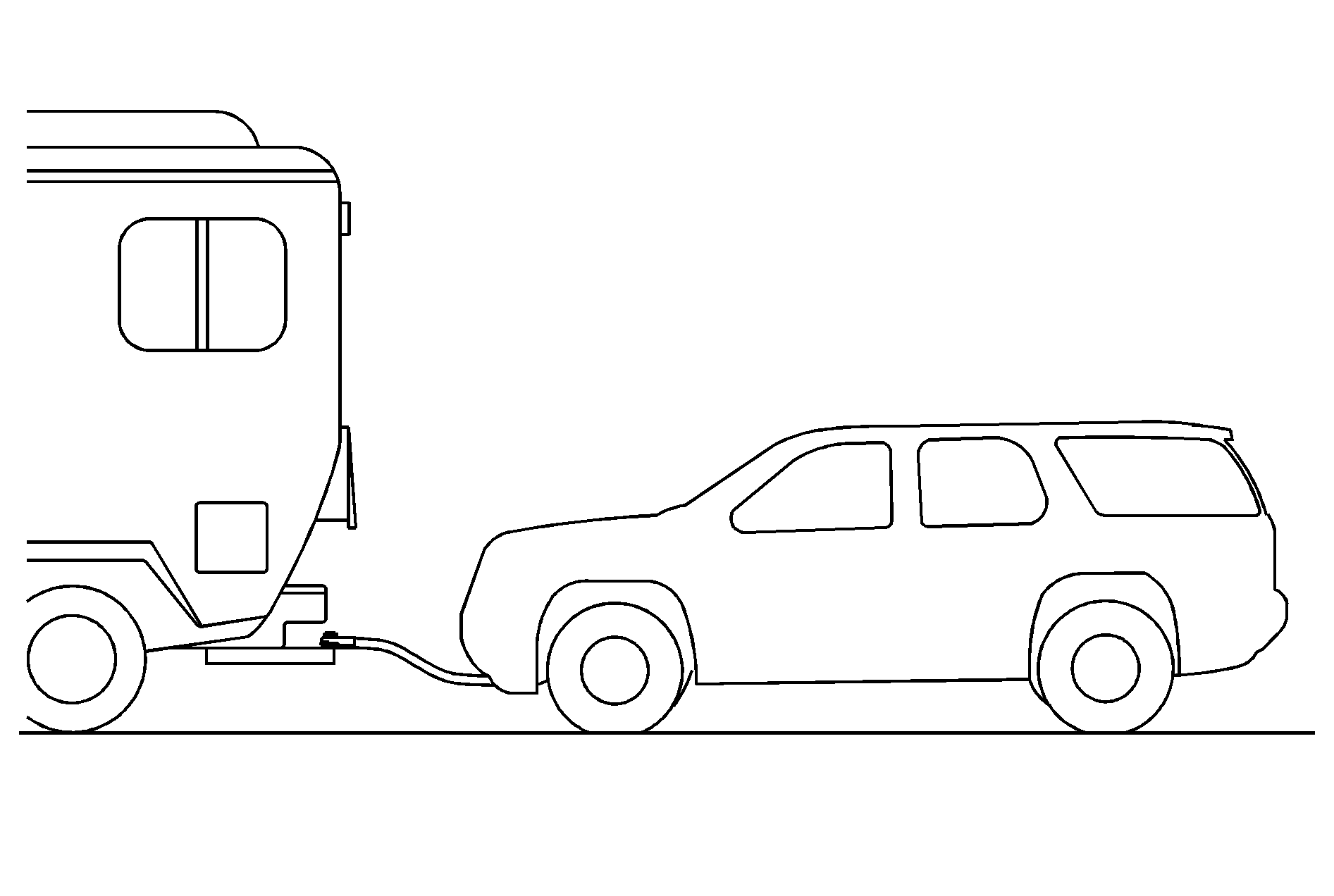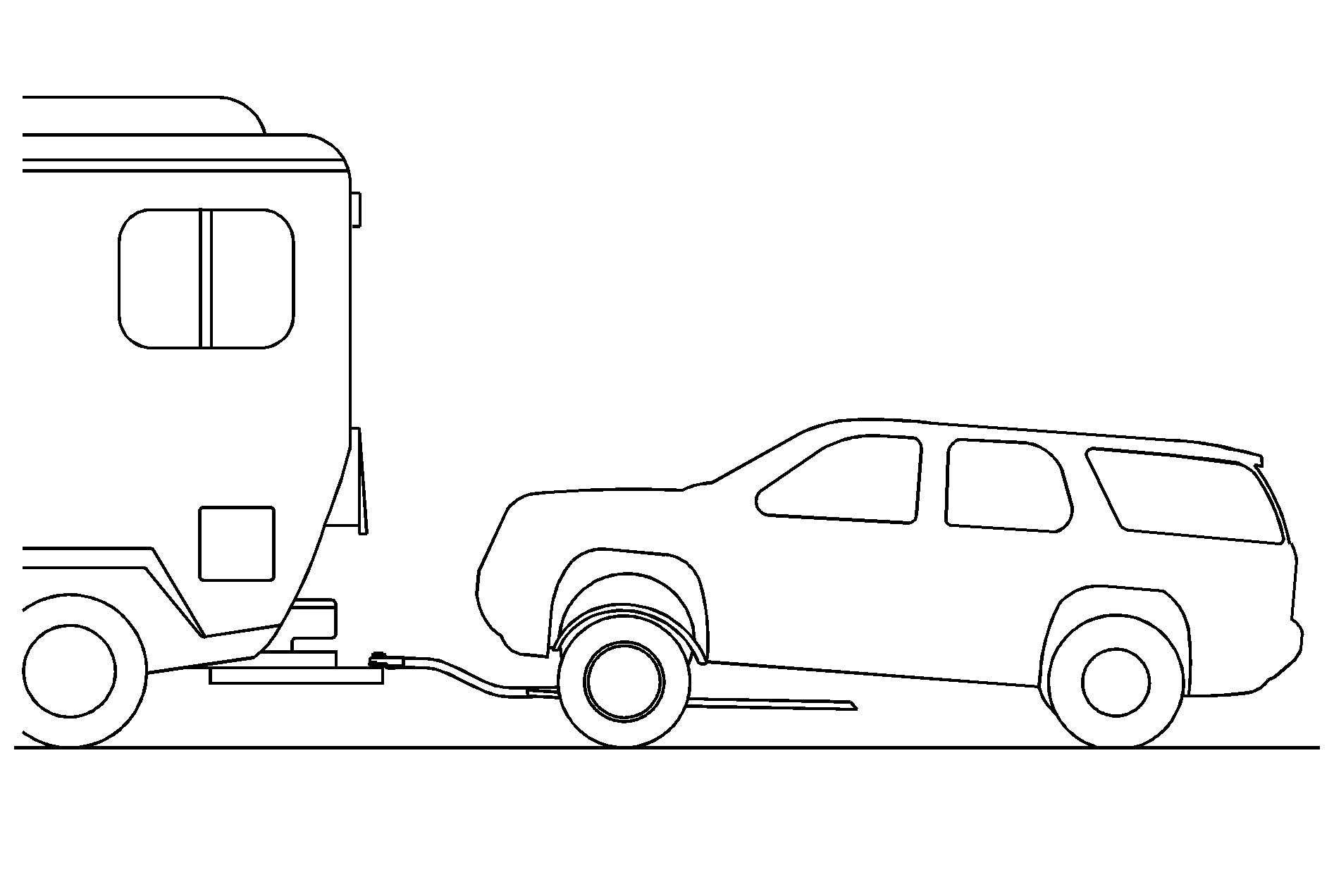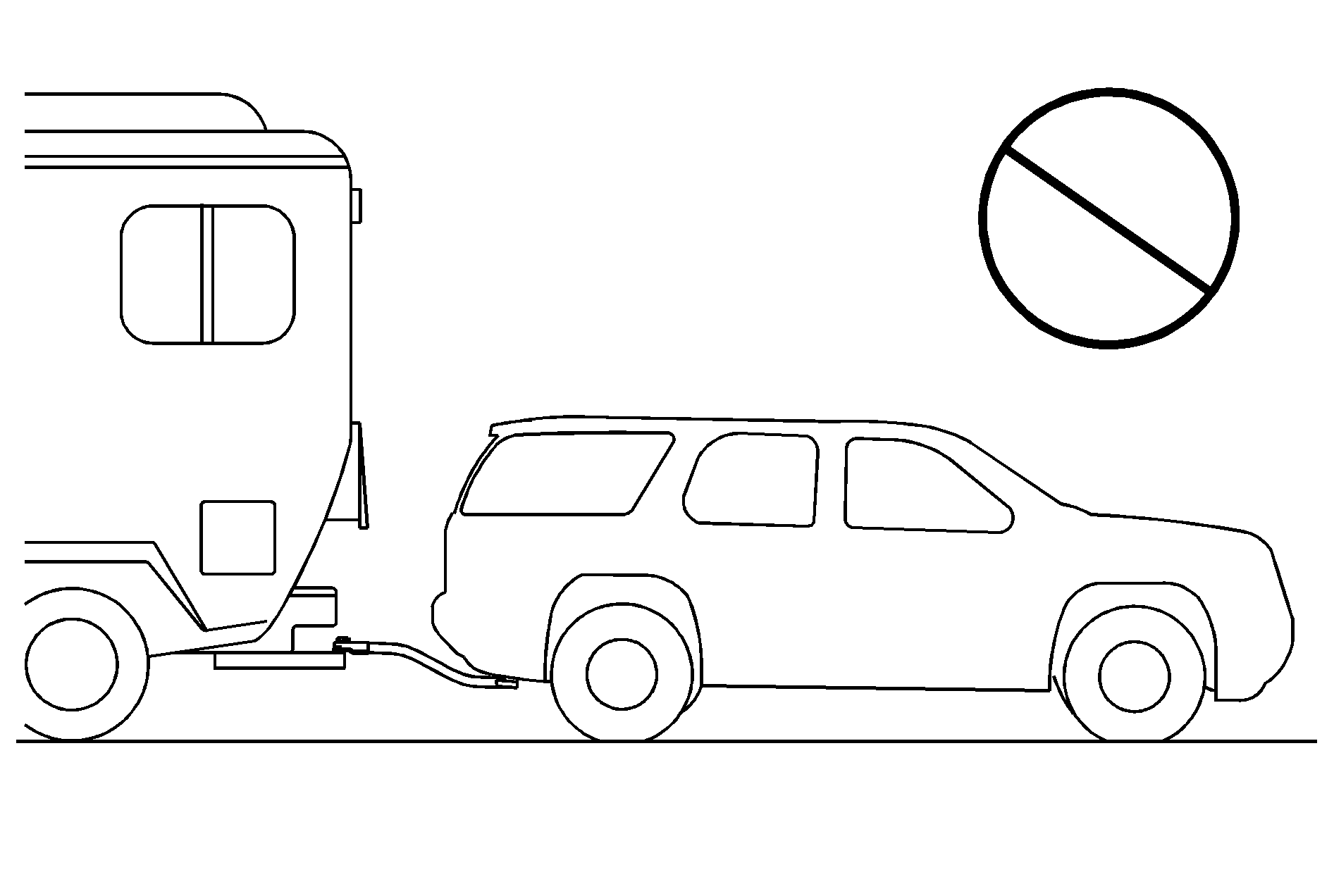Recreational vehicle towing means towing your vehicle behind another vehicle - such as behind a motorhome. The two most common types of recreational vehicle towing are known as "dinghy towing" (towing your vehicle with all four wheels on the ground) and "dolly towing" (towing your vehicle with two wheels on the ground and two wheels up on a device known as a "dolly").
With the proper preparation and equipment, many vehicles can be towed in these ways. See "Dinghy Towing" and "Dolly Towing" following in this section.
Here are some important things to consider before you do recreational vehicle towing:
| • | What's the towing capacity of the towing vehicle? Be sure you read the tow vehicle manufacturer's recommendations. |
| • | How far will you tow? Some vehicles have restrictions on how far and how long they can tow. |
| • | Do you have the proper towing equipment? See your dealer or trailering professional for additional advice and equipment recommendations. |
| • | Is your vehicle ready to be towed? Just as you would prepare your vehicle for a long trip, you'll want to make sure your vehicle is prepared to be towed. See Before Leaving on a Long Trip . |
Dinghy Towing (All-Wheel Drive and Front-Wheel Drive with VTi Transaxle)
Any all-wheel drive vehicles or front-wheel drive vehicles equipped with the VTi transaxle should not be towed with all four wheels on the ground. To properly tow these vehicles, they should be placed on a platform trailer with all four wheels off of the ground.
Front-wheel drive vehicles equipped with the VTi variable transaxle, manual transaxle or five-speed automatic transaxle may also be towed from the front by putting the front wheels on a dolly. See "Dolly Towing" later in this section.
Dinghy Towing (Manual or Five-Speed Automatic Transaxle*)

To tow your vehicle from the front with all four wheels on the ground, do the following:
- Position and attach the vehicle to tow it behind the recreational vehicle.
- Turn the ignition key to ACC.
- Turn fog lamps and all accessories off.
- If you have the manual transaxle, shift your transaxle to NEUTRAL and let the engine run for three minutes, then turn it off.
- If you have the automatic five-speed transaxle, shift your transaxle from DRIVE (D) to NEUTRAL and let the engine run for three minutes, then turn it off.
- Locate and remove the large IGNITION fuse from the underhood fuse block. See "Instrument Panel Fuse Block" under Fuses and Circuit Breakers .
Notice: Towing your vehicle after shifting the five-speed automatic transmission from anything other than DRIVE (D) to NEUTRAL (N) can cause internal damage to the automatic transmission. Always shift the five-speed automatic transmission from DRIVE (D) to NEUTRAL (N) as the last shift before towing.
Notice: If the vehicle is towed without performing each of the steps listed under "Dinghy Towing," the automatic transmission could be damaged. Be sure to follow all steps of the dinghy towing procedure prior to and after towing the vehicle.
Notice: If you tow your vehicle for more than eight hours per day or at speeds greater than 65 mph (105 km/h), you could damage the automatic transmission. The repairs would not be covered by your warranty. Do not tow your vehicle for extended periods of time or at speeds greater than 65 mph (105 km/h).
Once you have reached your destination, do the following:
- Set the parking brake.
- Shift the transaxle to FIRST (1) for manual transaxle.
- Turn the ignition key to LOCK and remove the key from the ignition.
- Replace the large IGNITION fuse.
Notice: Too much or too little fluid can damage the transmission. Be sure that the transmission fluid is at the proper level before towing with all four wheels on the ground.
Notice: Do not tow a vehicle with the front drive wheels on the ground if one of the front tires is a compact spare tire. Towing with two different tire sizes on the front of the vehicle can cause severe damage to the transmission.
Dolly Towing (All-Wheel Drive Vehicles)
All-wheel drive vehicles should not be towed from the front with two wheels on the ground. To properly tow these vehicles, they should be placed on a platform trailer with all four wheels off of the ground.
Dolly Towing (Front-Wheel Drive Vehicles)

To tow your front-wheel drive vehicle from the front with two wheels on the ground, do the following:
- Put the front wheels on a dolly.
- If you have a five-speed automatic transaxle or VTi variable transaxle, move the shift lever to PARK (P). If you have a manual transaxle, move the shift lever to SECOND (2).
- Set the parking brake and then remove the key.
- Clamp the steering wheel in a straight-ahead position with a clamping device designed for towing.
- Release the parking brake.
Towing Your Vehicle From the Rear

Notice: Towing the vehicle from the rear could damage it. Also, repairs would not be covered by the vehicle warranty. Never have the vehicle towed from the rear.
